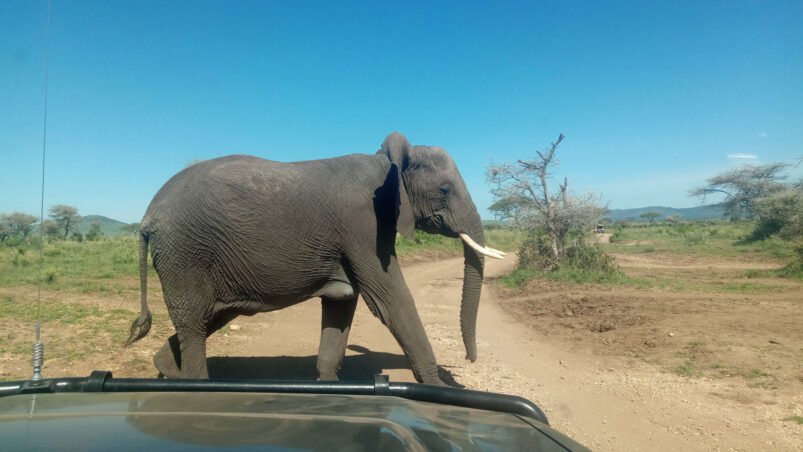Peak Time
July - October
Best Time To Go
Year-round destination
Famous For
Wildlife Safari Destination
Home of
The Great Migration
Serengeti Safari Tours and Holidays
Get ready for an amazing Tanzania Serengeti Safari! Serengeti Safari Tours and Holidays is your ticket to explore Africa's stunning wilderness. Come experience the beauty of Serengeti National Park with its amazing landscapes and incredible wildlife. Witness the incredible Serengeti Great Migration firsthand – it's a sight you'll never forget! Join us on a journey through this famous park and discover the magic of our safari packages.
Explore Serengeti National Park
The Serengeti National Park is a world-renowned destination for wildlife enthusiasts and nature lovers alike. Spanning over 14,750 square kilometers, this vast expanse of savannah plains is home to a diverse range of flora and fauna. From towering acacia trees to majestic lions and elusive leopards, the Serengeti offers a unique blend of natural beauty and wildlife encounters.
Key highlights of the Serengeti National Park
- Thrilling game drives to spot the Big Five and other iconic wildlife.
- Serene hot air balloon safaris for a bird's eye view of the landscape.
- Guided walking safaris to explore the park on foot.
- Cultural tours to interact with the Maasai communities.
Types of Serengeti Safari Packages
- Classic Safari: Ideal for those looking to explore the iconic wildlife and landscapes of the Serengeti.
- Luxury Safari: Indulge in a VIP experience with luxury lodges and private game drives.
- Family Safari: Create lasting memories with your loved ones on a family-friendly safari adventure.
- Photography Safari: Capture the beauty of the Serengeti with expert guidance from professional photographers.
Witnessing the Serengeti Great Migration
One of the most spectacular natural events in the world, the Serengeti Great Migration is a must-see phenomenon for any wildlife enthusiast. Witness millions of wildebeest and zebras embark on a journey across the plains in search of greener pastures. This incredible migration unfolds right before your eyes, offering a glimpse into the circle of life in the wild.
Highlights of the Serengeti Great Migration
- The river crossings, where animals brave the crocodile-infested waters.
- The dramatic predator-prey interactions that unfold during the migration.
- The sheer scale of the migration, a sight that leaves visitors in awe .
Serengeti Safari Packages for an Unforgettable Experience
Serengeti Safari Tours and Holidays offer a unique opportunity to experience the magic of Africa's wilderness. From the diverse wildlife of the Serengeti National Park to the awe-inspiring Great Migration, there's something for everyone. Explore our range of Serengeti safari packages and experience an adventure of a lifetime. Book your Serengeti Safari Tours and Holidays package today and explore the beauty of nature.
Serengeti Safari Tours and Holidays Packages follow a consistent pattern, where you explore various parks throughout the journey. The duration of the safari plays a crucial role in the number of destinations you can visit like Serengeti National park, Ngorongoro Crater and others.
The cost is influenced by the chosen accommodation level and the timing of your visit, particularly during the high season. The more luxurious the accommodation, the higher the overall price, and popular wildlife events like the Great Migration typically coincide with the high season. We provide a range of accommodation options, including budget, mid-range standard, and luxury. All our tours are private and cover all expenses, such as meals, permits, and a professional driver/guide throughout the entire safari duration. Explore each tour link for detailed information on what is included.
Discover the beauty of the Serengeti National Park and witness the wonder of the Great Migration with Serengeti Safari Tours and Holidays. Book your adventure today!
Best Serengeti Safari Tours 2024/2025
The tours below showcase just some of what is possible; use these itineraries as starting points, or to draw inspiration . You can reduce or add days and/or destinations and change to whatever accommodation your prefer
Then get in touch, and let our expert team help craft the perfect
itinerary for you.
Explore Serengeti Combined Safaris
Discover the ultimate African adventure with Serengeti Combined Safaris! Experience the magic of two iconic destinations: the Masai Mara in Kenya and the Serengeti in Tanzania. The Masai Mara is famous for its wide grasslands and diverse wildlife. It's part of the Mara-Serengeti ecosystem, renowned for the Great Migration of animals like wildebeests and zebras. Witness millions of animals moving across the plains in search of food.
Meanwhile, Tanzania's Serengeti National Park boasts vast savannas and an abundance of wildlife, including the Big Five: lions, elephants, buffaloes, leopards, and rhinos.
Combine these two incredible destinations for the ultimate East African experience, where you'll encounter stunning landscapes and fascinating wildlife. Extend your adventure with optional trips to Zanzibar, an enchanting archipelago off Tanzania's coast. Relax on pristine beaches, explore the historic Stone Town, and savor delicious local cuisine after your thrilling safari experience.
Activities in Serengeti National Park
Discover a variety of activities tailored to the interests of wildlife enthusiasts and nature lovers at Serengeti National Park. Here are some
key experiences to savor in this captivating destination
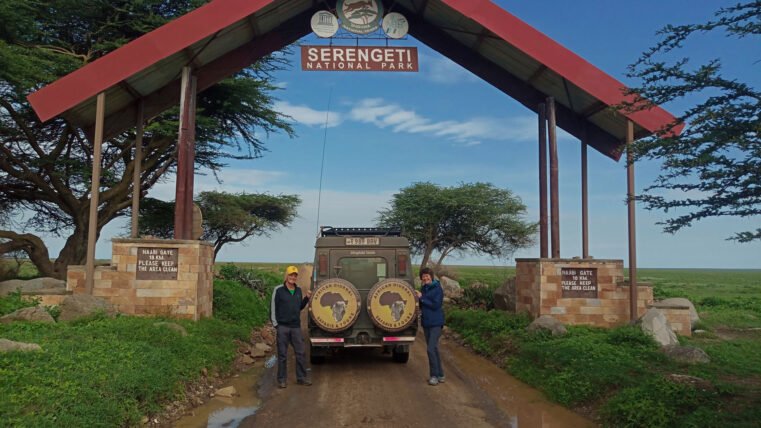
Serengeti Wildlife Drives
- Wildlife drives are the primary activity in Serengeti National Park. Guided by experienced safari operators or self-driven, these drives take you through different sections of the park, allowing you to witness the incredible diversity of wildlife
- Highlights: Spotting the "Big Five" (lion, elephant, buffalo, leopard, and rhinoceros) and other iconic African species in their natural habitat
How can you increase your likelihood of spotting wildlife?
The key factor is the amount of time you spend on safari, which applies to all wildlife sightings in the park. Having a knowledgeable guide, such as those at African Diurnal Safaris, can significantly enhance your experience.
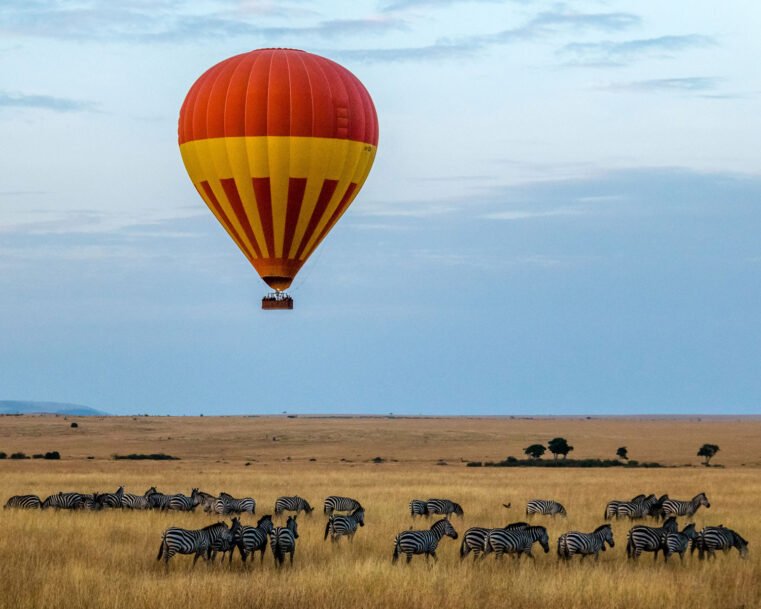
Serengeti Hot Air Balloon Safaris
- Experience the breathtaking beauty of Serengeti National Park from above by taking a hot air balloon safari. This activity provides a unique perspective of the landscape and wildlife.
- Highlights: Panoramic views of the plains, rivers, and wildlife in the early morning light.
Hot air balloon safari adds an unforgettable touch to your Serengeti safari tour, making it even more memorable.
Keep in mind, though, that this exclusive and somewhat pricey activity requires advance booking, and its availability is contingent on weather conditions. The cost for a hot air balloon safari typically falls between $450 and $500 per person.
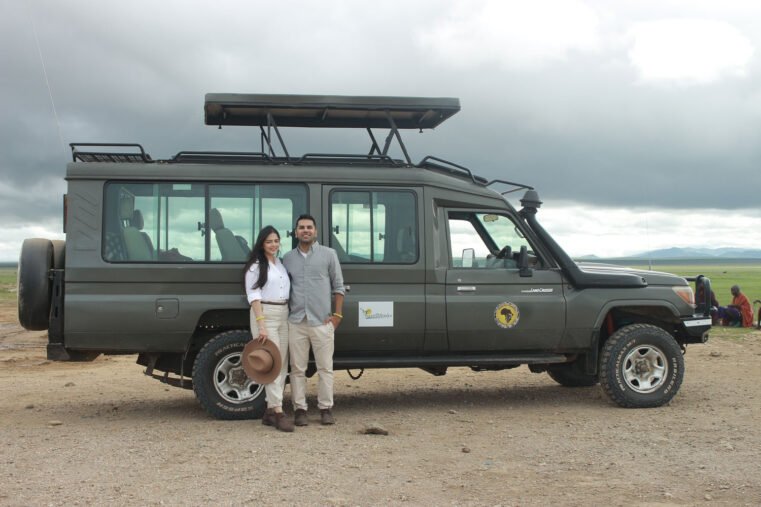
Serengeti Nature walks Safaris
Discover the wonders of the Serengeti national Park in a new and exciting way through
walking safaris. These safaris, designed to explore the diverse fauna and flora of the Serengeti park and are now available as multi-day camping trips
- Some lodges and camps offer guided nature walks in designated areas. These walks provide a closer look at the smaller details of the ecosystem.
- Highlights: Observing flora, insects, and smaller animals with an emphasis on the park's intricate ecological balance.
Serengeti walking safari provides a unique opportunity to delve into the
depth of the landscape. Accompanied by a knowledgeable guide, who is armed for safety, you can immerse yourself in the rich surroundings of the Serengeti and gain a more intimate understanding of its natural beauty.
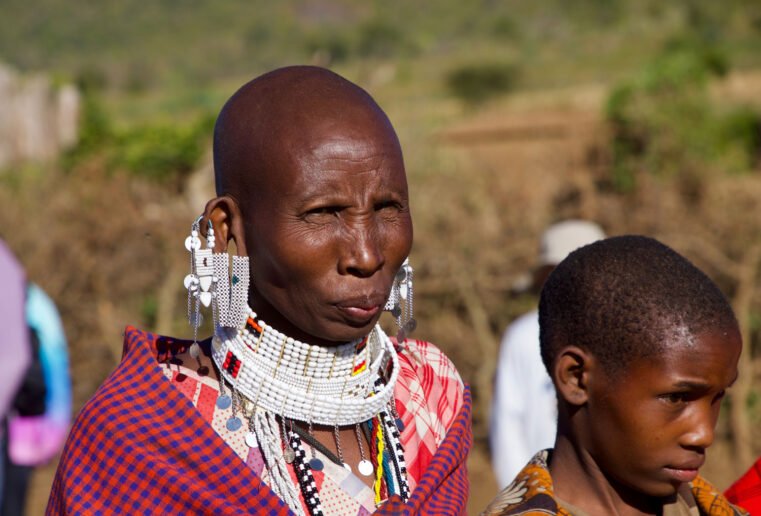
Serengeti Culture Tour/ Masai Village Visits
- Engage in cultural tours to learn about the traditions and lifestyles of the indigenous tribes in the Serengeti region, such as the Masai people.
- Highlights: Visiting local villages, interacting with community members, and experiencing traditional dances and rituals.
Explore the rich culture of the Masai tribe through a village visit, providing a unique opportunity to connect with one of East Africa's most iconic ethnic groups. Delve into their ancient customs and traditions, gaining insight into their enchanting way of life.
During your visit, engage with the locals, absorb their indigenous knowledge, and listen to captivating stories that have been passed down through generations. Engage in the vibrant Maasai culture as they eagerly showcase their traditional dances, songs, and rituals.
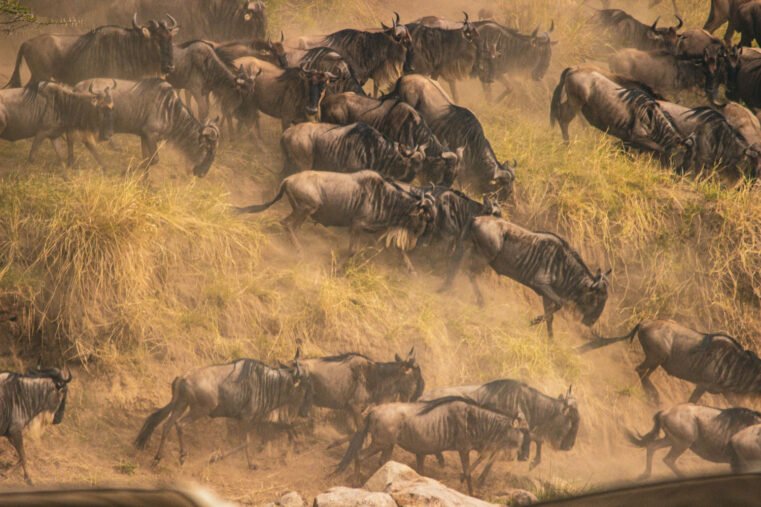
Serengeti Great Migration
The Serengeti Migration, also known as the Great Wildebeest Migration, is one of the most remarkable natural events in the world. It takes place in the Serengeti ecosystem, which spans across northern Tanzania and southwestern Kenya.
The migration involves the movement of millions of wildebeest, zebras, and other herbivores in search of fresh grazing and water. The continuous movement of the migration is driven by a seasonal quest for fresh water and pasture influenced by the rains, following a generally clockwise path.
The peak of the great migration occurs in the national park from April to June, coinciding with the conclusion of the long rains. Afterward, it heads north towards Kenya’s Maasai Mara Game Reserve, reaching there in August. In September and October, the migration is predominantly centered in Masai Mara.
Why Choose Serengeti National Park
As you envision your ideal Serengeti safari, we extend a warm invitation
to join us on an extraordinary adventure with African Diurnal Safaris. Our promise is to provide you with Serengeti National Park
tours that are extremely memorable . Get ready for a once-in-a-lifetime experience that will stay with you forever.
Great Migration
The Serengeti is renowned for hosting one of the most spectacular wildlife events - the Great Migration. Millions of wildebeest, zebras, and other herbivores move in search of fresh grazing, attracting predators and offering incredible wildlife viewing opportunities.
Abundance of Wildlife
The Serengeti is home to a diverse range of wildlife, including the "Big Five" (lion, elephant, buffalo, leopard, and rhinoceros). The expansive grasslands and various ecosystems support a rich biodiversity.
Experienced Guides
African Diurnal Safaris is proud to introduce our team of extensively trained and experienced guides who can enhance your safari experience by sharing insights about the wildlife, ecosystems, and local culture.
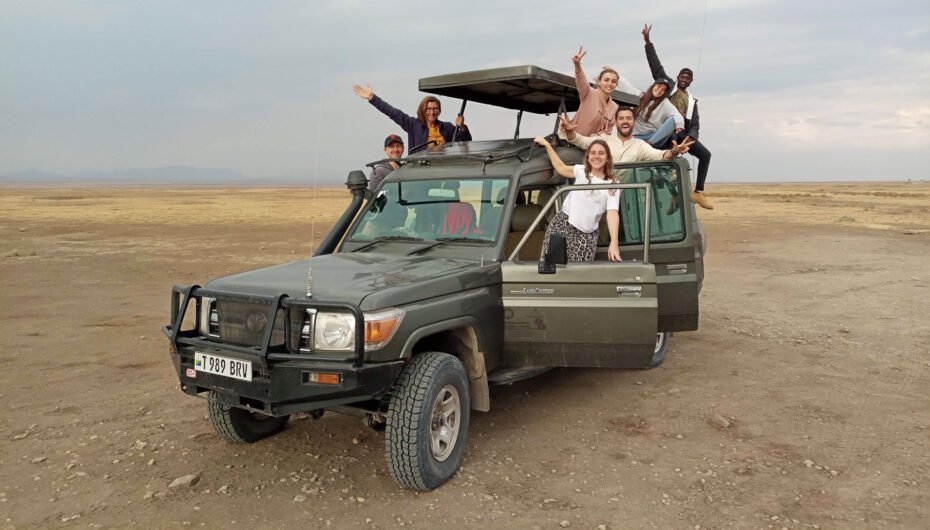
Safety and Comfort
Ensuring your safety and comfort during your safari is our utmost priority. We take great care in maintaining our fleet of safari vehicles to guarantee reliability throughout your adventure. We have thoughtfully selected accommodation partners that offer a variety of options, from luxurious lodges to comfortable tented camps.
The Serengeti National Park in Tanzania is a natural wonder that truly deserves to be experienced. When you choose African Diurnal Safaris, you can rest assured that your journey through this extraordinary landscape will be unforgettable, immersive, and filled with awe-inspiring wildlife encounters.
Serengeti National Park
Serengeti National Park: Established in 1951, the Serengeti National Park is a UNESCO World Heritage Site and is a crucial part of the larger Serengeti ecosystem. It offers visitors the chance to witness incredible wildlife, landscapes, and the Great Migration
The Serengeti is a vast ecosystem located in East Africa, primarily in Tanzania, with portions extending into Kenya. It is one of the most famous and diverse wildlife regions in the world, known for its stunning landscapes, rich biodiversity, and iconic animal migrations
The word "Serengeti" comes from the Maasai term "siringet," translating to "the place where the land runs on forever." True to its name, the Serengeti provides boundless vistas featuring rolling grasslands, acacia woodlands, rocky outcrops (known as kopjes), and the expansive Serengeti Plains. Notably, the Serengeti holds the prestigious status of being a UNESCO World Heritage Site and is recognized as one of the Seven Natural Wonders of Africa.
The Serengeti national park spans approximately 30,000 square kilometers (12,000 square miles) and includes grasslands, savannas, woodlands, and riverine forests. The Serengeti National Park in Tanzania is at the heart of this ecosystem.
Serengeti Wildlife: The Serengeti is home to a diverse array of wildlife, including the "Big Five" (lion, elephant, buffalo, leopard, and rhinoceros). Other notable species include cheetahs, giraffes, zebras, wildebeests, hippos, crocodiles, and numerous bird species.
Serengeti Great Migration: One of the most remarkable natural events in the Serengeti is the annual Great Migration, where vast herds of wildebeest, zebras, and gazelles migrate in search of water and fresh grazing lands. This migration is a dynamic and awe-inspiring spectacle, attracting tourists and researchers alike.
Serengeti Conservation: Conservation efforts are crucial to preserving the Serengeti's unique ecosystem. The Serengeti is home to various conservation initiatives and organizations working to protect the wildlife and habitats, combat poaching, and ensure sustainable tourism practices.
Serengeti Human Interaction: The Serengeti is not only a wildlife sanctuary but also home to local communities. Balancing conservation with the needs of these communities is an ongoing challenge, and sustainable development practices are essential to maintaining the delicate balance between humans and wildlife.
Best Time to Visit Serengeti
The best time to visit the Serengeti National Park is during the dry season, which runs from late June to October. This period offers the best wildlife viewing in general, as animals gather around rivers and waterholes. The dry season also brings perfect weather conditions with bright, blue skies. Additionally, this is when the Great Migration takes place, offering visitors an extraordinary and unforgettable experience.
However, no matter what time of year you visit, the Serengeti National Park in Tanzania and Kenya offer a spectacular safari experience. February, June-September and November-May are all great times for a safari in Tanzania’s Serengeti National Park.
Overall, if you’re looking for an amazing wildlife experience with perfect weather conditions then late June to October is your best bet for Serengeti safari tours.
How to get to Serengeti National Park
Although Serengeti national park located in a rather remote corner of our planet, Serengeti National Park is easily accessible. Most travelers start their Serengeti safari adventure at Kilimanjaro International Airport, bustling Arusha or Mwanza City. From here you may either travel to your preferred lodge by means of a short transfer flight or by safari vehicle.
Visitors can get to and from Serengeti National Park by plane. There are nine airstrips found inside the park. The Seronera airstrip serves Central Serengeti; the Lobo, Kleins and Kogatende airstrips provide access to the north; the Grumeti, Kirawira and Ikoma airstrips offer service to the Western Corridor; and the Kusini and Ndutu airstrips are situated in Southern Serengeti.
Tanzania Wildlife Safaris - Unforgettable Serengeti Safaris
Discover the wonders of Tanzania's wild lands with our special Tanzania Wildlife Safaris. Explore the breathtaking Serengeti National Park, where nature's symphony echoes with lions' roars, elephants' trumpets, and the thrilling sight of migrating wildebeests. Our carefully planned trips ensure you experience the thrill of the wild, with every moment brimming with excitement and exploration.
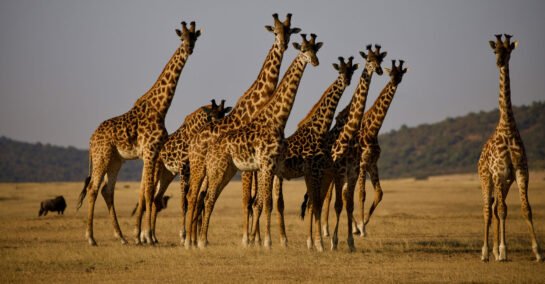
Hop on exciting game drives across the wide plains of the Serengeti, where every corner of the savannah brings a fresh and exciting sight. Our knowledgeable guides will take you deep into the park, where you can see predators hunting, groups of elegant antelopes, and vibrant bird gatherings.
When you explore the Serengeti, you can't afford to miss the breathtaking Great Migration. Watch in awe as millions of wildebeest, zebras, and gazelles move across the plains in search of better grazing spots, facing dangers like crocodile-filled rivers and predators. It's a one-of-a-kind sight, and our tours are designed to make sure you catch every moment of this natural marvel.
Explore the vibrant cultural traditions of Tanzania with visits to local Maasai villages. Learn about their ancient customs, enjoy traditional dances, and engage with community members to gain insight into their way of life. It's an opportunity to connect with people who have lived alongside wildlife for generations, adding a unique aspect to your safari adventure.
Frequently Asked Questions About
Safari in Serengeti National Park
What types of safaris are available in Serengeti National Park?
There are various safari options, including game drives, walking safaris (usually with an armed ranger), and hot air balloon safaris. Visitors can choose from budget camping safaris to luxurious lodge-based safaris.
What wildlife can be seen in Serengeti National Park?
Serengeti is renowned for its diverse wildlife, including the "Big Five" (lion, leopard, elephant, buffalo, and rhinoceros), wildebeest, zebras,
giraffes, cheetahs, hippos, crocodiles, and numerous bird species.
What is the Cost of a Serengeti Safari?
Entering the Serengeti National Park requires park fees of $82.60 per adult and $23.60 per child, payable at the park gates. The cost of a private safari depends on your choices of camp, lodge, vehicle, and group size. For the best experience and accurate pricing, it is recommended to reach out to a reputable safari operator.
Most Serengeti National Park Safari Packages typically include transportation to and from the park, accommodation, park entrances, the service of a safari guide, and onboard drinking water. However, it's essential to confirm these inclusions and exclusions with your Serengeti tour operator before confirming your booking.
Drinks and beverages are often not covered. When booking directly with a Serengeti lodge or Camp, you might receive a quote for full board accommodation prices. In such cases, additional fees may apply for game drives, usually allowing for two activities per day, each lasting about two to three hours.
Choosing the "game package" offered by your Serengeti safari lodge or camp is advisable. This package typically includes accommodation and two daily activities. If you're flying into the Serengeti, this package might also cover pick-up and drop-off from the nearest airstrip.
It's important to note that activities provided by the lodge or camp, such as wildlife excursions, may be shared with other guests.
The overall cost of your Serengeti safari tour, as quoted by your chosen operator, will depend on the safari type you select. Options range from budget-friendly to midrange and luxury safaris.
Mid-Range Serengeti Safaris?
Explore the Serengeti National Park in comfort with our mid-range safaris. Stay in cozy lodges and camps that provide reliable and reasonably priced accommodation. These tours offer a comfortable experience with costs ranging from USD 350 to USD 470 per person per day, based on room sharing.
Luxury Serengeti Safaris?
Indulge in a luxurious Serengeti safari experience by staying in private high-end lodges and tented safari camps. These tours focus on providing a private, authentic, and personalized bush experience with top-notch comfort and amenities. Enjoy the expertise of experienced safari guides.
Luxury Serengeti trips start from USD 850 per person per day with room sharing
How Do You Visit the Serengeti on a Budget?
Experience the Serengeti on a budget without compromising comfort. Consider a self-drive safari for a cost-effective option, but be aware of risks. Hiring a guide within the park is recommended for safety and animal identification. Save costs by staying outside the park, opting for accommodation in the western corridor or public campsites where you can pitch your own tent and cook.
How to Arrange a Serengeti Safari Tour
If you're considering a Serengeti safari tour, there are several ways to plan and book your adventure. You can choose to go through a Tanzania Serengeti safari operator, an international travel agent, or make direct arrangements with a camp or lodge within the Serengeti.
Opting for a tour operator provides the convenience of flying into Tanzania and seamlessly transferring to the Serengeti for your dream safari. This approach allows you to enjoy the experience without worrying about the logistical details.
Alternatively, booking through an international travel agent in your home country offers the advantage of having an expert plan your Serengeti safari holiday. However, it's worth noting that many international travel agents work closely with local Tanzanian safari companies. Therefore, booking directly through a local operator in Tanzania might be a more cost-effective option.
We recommend planning and booking your Serengeti National Park safari well in advance of your arrival in Tanzania. This ensures you secure a spot at high-quality lodges and camps, especially if you plan to visit during the peak season. Doing so enhances your overall safari experience and allows you to choose from the best accommodations available.
What are the accommodation options in Serengeti National Park?
Accommodations range from tented camps and lodges to luxury camps, each offering a unique experience. It's advisable to book accommodations well in advance, especially during peak seasons.
Affordable Serengeti Safaris?
Serengeti safari packages on a budget typically involve camping or staying in basic tented camps situated outside the park to keep expenses low.
The cost of a budget safari in Serengeti ranges from USD 240 to USD 350 per person per day when booking with African Diurnal Safaris & Tours.
What Time of the Year is the Migration in the Serengeti?
Witness the Serengeti migration from December to April when herds concentrate on the treeless short grass plains in the southern
Serengeti. The herds then journey north from June to July, crossing the northern Serengeti to reach the Masai Mara National Reserve in Kenya
Why do Animals Migrate in the Serengeti?
Discover the fascinating migration patterns of Serengeti's wildlife. The animals follow the rainfall gradient, moving from the north to the southern plains when the rains begin, and returning to the north once the southern grass dries out.
How Many Days Are Enough for the Serengeti?
For a fulfilling Serengeti experience, plan a minimum of three days and two nights. Explore the park's three sectors – southern, central, and western, where the migration is predominant.
Consider a week-long stay with two nights in each sector for maximum exploration.

